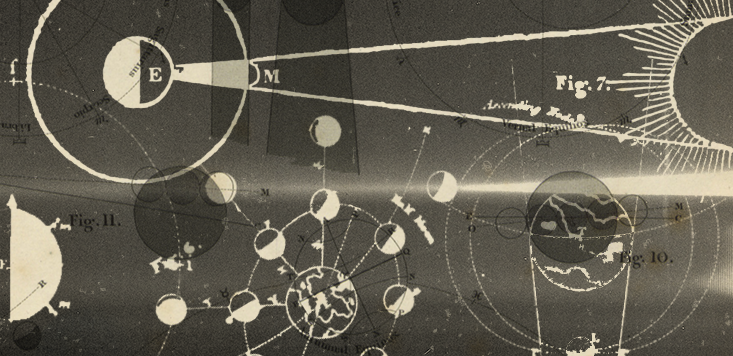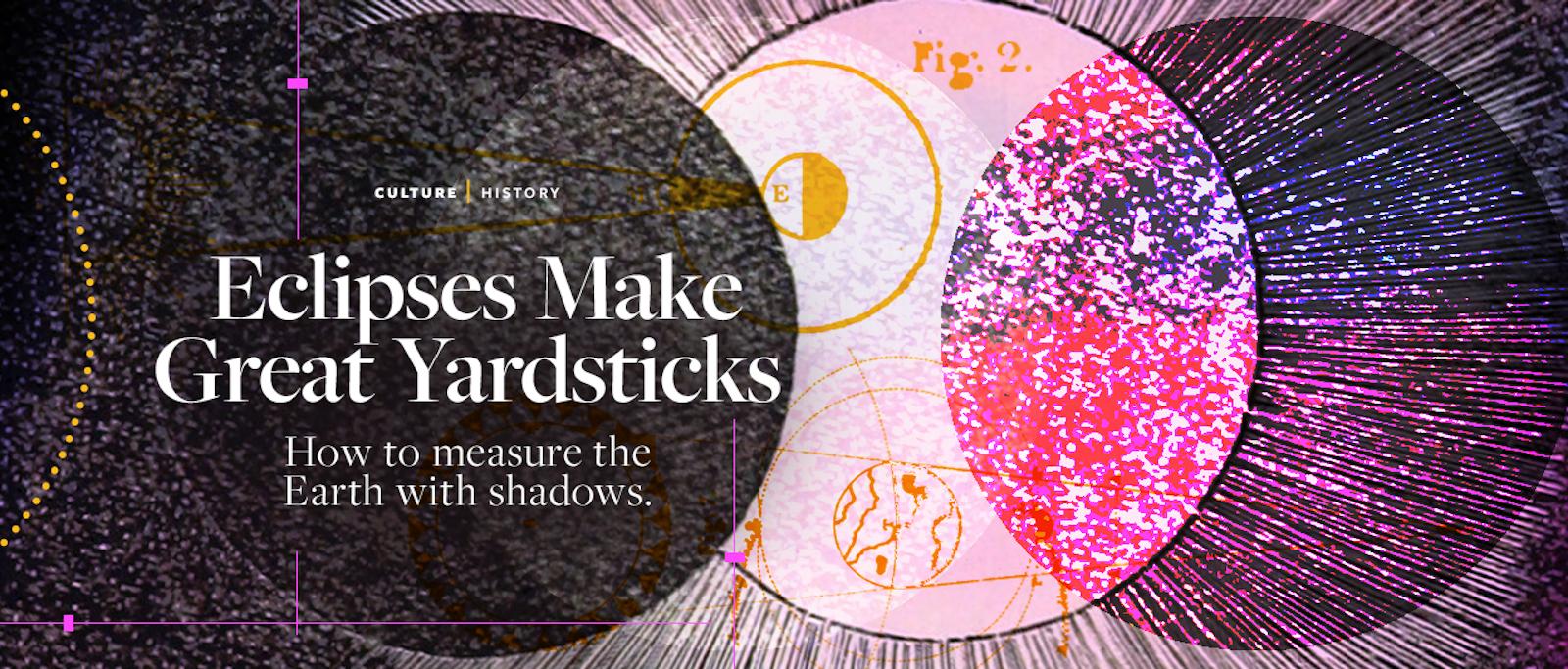As a kid visiting the Oregon coast I often wondered, “How wide is the ocean, and what is there beyond the horizon?” As I grew older and turned my sights to the night sky, I wondered something very similar: “How far away are the stars, and are there other planets there?” Even though very few of us have ever circumnavigated the globe, and no human being has ever ventured into space beyond the moon, we do know some of the answers to these questions. Immensity isn’t immeasurable. While these vast numbers may make little sense in our daily lives, we at least know they are known.
Consider what it must have been like to live in a world where this was not true: where the sense of immeasurability, the certainty of the unfathomable, was commonplace, and the thought that the world could be known was a novel idea. The philosopher Anaxagoras was born in about 500 B.C. in the eastern Mediterranean on what is now the coast of Turkey. It was a time when philosophy had only recently turned its attention to the natural world. Less than a hundred years before, Thales of Miletus supposedly predicted the solar eclipse that ended a war, thus implying that our world was predictable and events were not just the random whims of the gods.

In such a world of physical phenomena, Anaxagoras was the first, as far as we know, to understand that eclipses occur when one heavenly body blocks the light from another. This rejection of gods and dragons as the causes of eclipses was a revolutionary thought by itself, but Anaxagoras took it further: If solar eclipses happened only because the Earth had moved into the shadow of the moon, he reasoned, then the size of the shadow must tell us something about the size of the moon. Additionally, since the moon covered the sun, the sun must be farther away. Yet to appear nearly the same size, the sun must be larger than the moon. Herein lies the power of scientific thought: Measure the extent of the shadow sweeping across the Earth, and you know the moon must be at least as big as the shadow, and the sun larger still. Mysticism provided no such opportunity: If eclipses occur when a demon devours the sun, there is no reason to believe that any measurement we make here on Earth should reveal the demon’s size.
On Feb. 17, 478 B.C., the shadow of an annular eclipse spread across the Mediterranean Sea and crossed the Greek islands and peninsula of the Peloponnese, creating a “ring of fire” in the sky that was visible for almost six minutes. Anaxagoras, living in Athens, would have been living along the midline of annularity and surely would have seen the sight, but he could not, all by himself, in only six minutes, measure the size of the shadow across the countryside. And yet in a stroke of genius, he found the answer to his question: He simply went down to the seashore and asked arriving sailors what they had seen. At that time, Athens was the center of trade for ships from all over the eastern Mediterranean. If sailors at sea had seen a ring of fire in the sky, they would remember where they had been when they had seen it. The locations of all those who did and did not see the spectacle revealed the extent of the shadow across the surrounding seascape. Without going farther than the local seaport, Anaxagoras measured the moon.
This rejection of gods and dragons as the causes of eclipses was a revolutionary thought by itself.
While we do not have Anaxagoras’s own words as to what he concluded, we do have the writings of those who came after. Five hundred years later, the Roman historian Plutarch wrote, “Anaxagoras [says that the Moon] is as large as the Peloponnesus.” Hippolytus of Rome, a third-century father of the Christian church, wrote in his Refutation of All Heresies that, according to Anaxagoras, “the sun exceeds the Peloponnesus in size.” The story of Anaxagoras standing on the beach measuring the size of the moon is the story of astronomy. We are a species confined to our own world (or at best, our own solar system). Yet from this one vantage spot we have had to survey the universe on whose shores we stand. To do so we have had to study eclipses, transits (when small things move in front of big things), and occultations (when big things move in front of small things). Astronomy is made possible, in part, by the shadows that span the stars.
Standing on the celestial seashore, let’s pace out our universe, starting from the world we see by day to the stars we see at night. At each step we will learn where we are and how far we’ve come. What is the simplest way to measure distance? We can walk. We measure distance in feet (at least in the United States), and it’s no accident that a foot is about the size of our own feet. How far can a person measure precisely by walking? In the Mediterranean of the third century B.C., bematists were men who could walk at a precise and constant pace, and they were paid to do so. You could hire such a man to accurately measure long distances across the landscape. Bematists were used along the Egyptian Nile, which during its annual floods erased the features marking the boundaries between fields. Bematists were particularly suited to pace off the long, flat, featureless landscape along the Nile south from Alexandria to Syene, which they found to be 5,000 stadia apart (around 520 modern miles, depending on the exact definition of stadia used). We know this distance because sometime in around 240 B.C., Eratosthenes of Cyrene, the chief librarian of Alexandria, used it to find the size of the world.
Eratosthenes had heard that on the summer solstice, the noonday sun would shine straight down a well in Syene and cast no shadow. He knew no such thing happened in Alexandria on that or any other day, so one of two possibilities must be true: Either the Earth was flat and the sun was very close (much like a cloud that hangs over one town appears far to the south as seen from another), or the sun was far away and the Earth was round. The answer could be found by looking at the moon during a lunar eclipse. Aristotle had already noted a century before Eratosthenes’s experiment that during every lunar eclipse the Earth’s shadow looked like a circle. No matter where the eclipse occurred in the sky, the shadow the Earth cast never changed. The only figure that looked the same from any direction was a sphere.
Astronomy is made possible, in part, by the shadows that span the stars.
Since the Earth’s shadow already confirmed the Earth was round, the only explanation for the different lengths of the sun’s shadows in Syene and Alexandria was the curvature of the Earth. From the difference in shadows and the distance between them, the circumference of the Earth was revealed.
Here’s how the principle works: Imagine that one day in the Hawaiian Islands, you notice your own shadow directly at your feet, while flag poles and Tiki totems cast no shadows at all. You look overhead and there is the sun at the zenith, the highest point in the sky. Hawaiians call it Lahaina Noon after the name of a town on the island of Maui where this happens twice each year. You immediately call your friend in Puerto Rico, who is unimpressed. Right at that instant, she is watching a spectacular sunset, with the sun touching the waters of the Caribbean on the horizon. At that moment, the two of you see the sun 90 degrees apart in the sky, that is, exactly one-quarter of a circle apart (90 degrees/360 degrees = 1⁄4). You must therefore be a quarter of a circle, a quarter of the Earth’s circumference, away from one another. Measure the distance between you, multiply by four, and you know the full distance around the Earth.
This is precisely what Eratosthenes did. At the moment that the sun was directly overhead and shadows disappeared in Syene, he measured the lengths of shadows in Alexandria and concluded that there was a change in the sun’s position of 7.2 degrees. This difference meant that the two cities were 1/50th (7.2 degress/360 degrees) of the way around the Earth from one another. Since the distance on foot between them was 5,000 stadia, the entire Earth, Eratosthenes reasoned, must be 250,000 stadia around. Depending on the precise length of a stadia, his value for the Earth’s circumference may have been off by as little as 2 percent from the actual value we now know. More important than this precision, however, is the very idea that it could be done.
Tyler Nordgren is an astronomer and associate professor of physics at the University of Redlands.
Adapted excerpt from Sun Moon Earth: The History of Solar Eclipses from Omens of Doom to Einstein and Exoplanets by Tyler Norgren.Copyright © 2016. Available from Basic Books, an imprint of Perseus Books, a division of PBG Publishing, LLC, a subsidiary of Hachette Book Group, Inc.






























